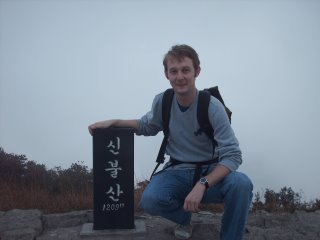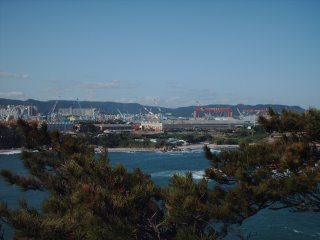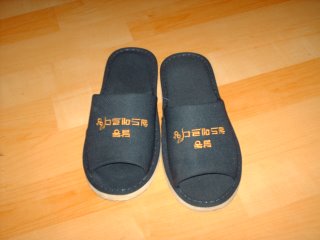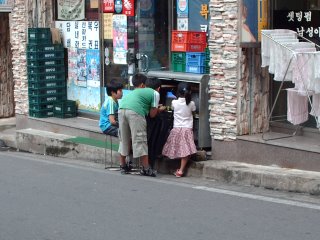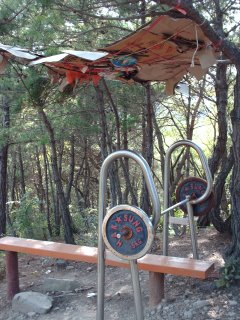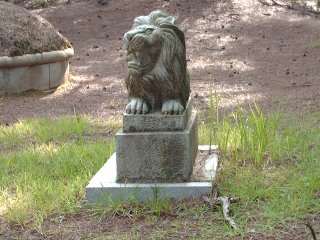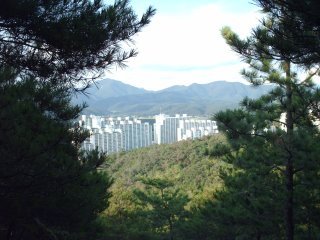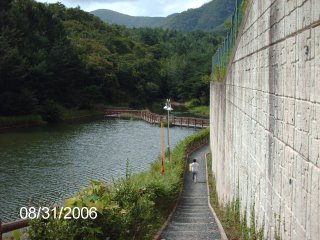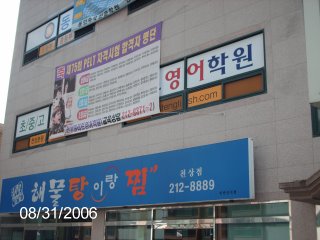In The Clouds With Buddha's Ghost
Yesterday when I arrived at work, my director, Mr. Park, asked if I had any plans for the weekend. I answered honestly that I didn't, although I was hoping to get some rest and fully recover from the chest cold I've been suffering from all week (just one of the many joys of working with children). He invited me to join him for a hike on Saturday, and I told him I would without thinking about what that would entail. Apparently, one of the students at the academy saw me on my Munsu-san excursion last weekend and so I seem to have developed a reputation as an avid hiker amongst the Korean staff, which should amuse those of you that know me. He was very excited and told me he would pick me up from my apartment at 8:10 the next morning. I spent the rest of the day wondering why I had agreed to go hiking and commit to waking up early (by my standards) on a Saturday morning, but as I discovered it was totally worth it.
Mr. Park arrived with two of his friends (whose names I promptly forgot- it's still difficult for me to remember Korean names, they all seem to be varying combinations of the same syllables, and everyone has one of about ten surnames, but that's neither here nor there)

(That's Mr. Park on the left)
and we drove about 45 minutes outside of Cheonsang to the Yeongnam Alps, another of Ulsan's 12 designated scenic areas. As one of Mr. Park's friends put it, "The car does 80% of the climb for us!" We parked at the trailhead, already close to 1000 meters up the mountain. It was still early enough that the clouds were still hanging quite low over the mountain range, and so we ascended into the clouds, up Shin-Bul San (literally "Buddha's Ghost Mountain") about 1200 meters above sea level:

It was a steep ascent, but the trail was much better than Munsu-san's. After arriving at the summit, we headed across a ridge connecting several peaks in the Yeongnam range. Here, some construction workers were hard at work assembling a stage for tomorrow's Mountain-Wheat Festival, which Mr. Park told me would attract around 30,000 mountain enthusiasts:

Here is a view of some of the other peaks through the wheat fields that run along the range. During the Korean War, North Korean-partisan guerillas hid out in these fields and did battle with the South Korean army:
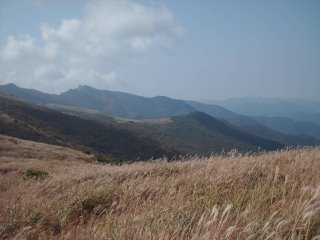
We stopped for a short break, and I learned that in addition to the near-uniform hiking outfits that Koreans wear, another part of the hiking ritual is bringing snacks along. And these aren't just plastic baggies full of trail mix. We had two different types of rice cakes, fruit, and some sort of coffee drink. Others on the trail had kimchi, rice, fish cake, and more. Afterwards, we continued on to the second peak, Yeong-Chuk San, climbing high above one of the oldest and most famous Buddhist temples in Korea, Tongdosa, which purports to house some relics of the Buddha himself. Here is the view from the top:
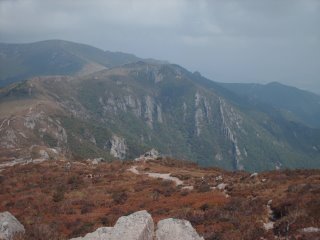
On the way back, I captured this scene of the foliage beginning to turn. Apparently, the peak season will be at the end of October:

And here is a what the valley below looks like. Through the haze is Eonyang, another part of Ulsan's sprawl:

After the outing, we drove back to Ulsan where one of Mr. Park's friends treated us to lunch at a Chinese restaurant. They made a point of letting me know that the dish itself was not actually Chinese, rather a "Chinese-inspired" Korean dish. Mr. Park made plans to take me and Jessica, my roomate and fellow wayguk teacher, on a hike up one of South Korea's highest peaks, Seorak-san, in November. He was concerned that neither of us had proper footwear, so he insisted on buying us both pairs of hiking boots, calling them chuseok (the upcoming Korean Thanksgiving) presents. I was extremely grateful and surprised that I had such a generous director.
So, in summation, it was quite a day and I'm glad I agreed to go. The Yeongnam Alps have some of the most beautiful mountains I've ever had the pleasure of seeing in person, and for someone who grew up on Mount Desert Island, that's saying a lot.

